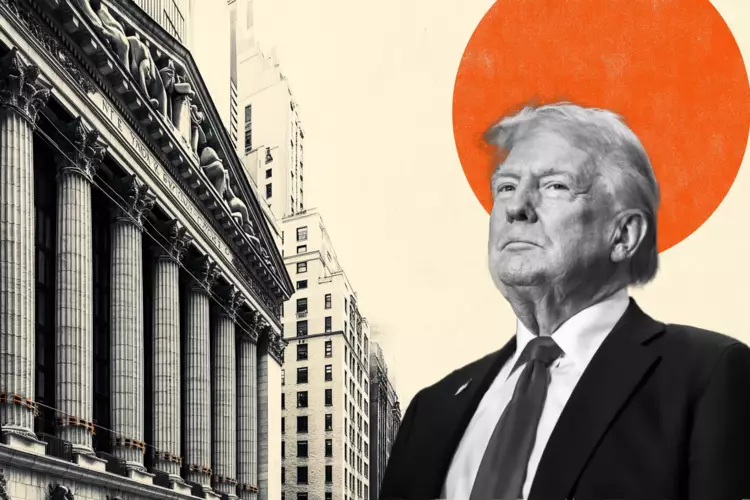On a turbulent Wednesday, Donald Trump took to Truth Social, venting his frustrations with Federal Reserve Chairman Jerome Powell over the central bank’s policy decisions. His remarks followed the disappointing release of private sector payroll data by Automatic Data Processing (ADP), which showed an abysmal growth of just 37,000 jobs in May. This figure not only failed to meet market expectations of 115,000 but also represented the weakest performance since March 2023. By drawing attention to these developments, Trump aimed to underscore his belief that the Fed’s current interest rate policies are out of sync with the economic realities facing American workers and businesses.
Trump’s call for rate cuts isn’t merely a reactionary outburst; it reflects a broader narrative surrounding economic recovery. The ex-president pointedly noted that Europe has already initiated nine rate cuts, framing this as a lost opportunity for the U.S. economy. The contrast he draws serves two purposes: it paints a picture of a measured response to a faltering economy abroad while simultaneously positioning himself as a keen observer of fiscal policy.
The Growing Bearish Pressure on the Dollar
As Trump’s comments reverberated across financial markets, the U.S. Dollar (USD) found itself under considerable bearish pressure. By the early American trading session, the USD Index had slid 0.25%, dipping to 99.00. The dollar’s vulnerability is indicative of deeper currents in global finance. As the most traded currency, the USD’s strength directly impacts international economics, thereby warranting careful scrutiny of strategies from the Fed.
The dollar’s status as the world’s reserve currency, first established after World War II, has created immense responsibilities. With its backing removed from gold in 1971 following the Bretton Woods Agreement, the dollar’s value now hinges significantly on the monetary policies enacted by the Federal Reserve. Thus, any calls for rate cuts must be viewed through the prism of long-term implications for both the dollar and the global economy.
The Role of Interest Rates in Economic Stability
The Federal Reserve operates with dual mandates: to ensure price stability and foster full employment. These objectives are achieved largely through the manipulation of interest rates. When inflation surges above the Fed’s target of 2%, rate hikes are typically employed to curb spending and cool off the economy. Conversely, when inflation lingers below that threshold or unemployment rises, rate cuts often follow to stimulate growth.
Trump’s insistence on lowering rates relates intimately to this framework. He argues that failure to adjust rates downward could leave the economy vulnerable, stifling potential growth and employment. Yet, such choices are fraught with risks. Lowering rates can diminish purchasing power and trigger inflationary pressures, creating a challenging balancing act for the Fed. Critics may argue that Trump’s simplified view fails to account for the complexities of economic fluctuations and the nuanced approaches required for sustainable recovery.
The Mechanisms of Monetary Policy: Quantitative Easing vs. Quantitative Tightening
In times of severe economic distress, the Federal Reserve can resort to unconventional methods such as quantitative easing (QE) or its reverse, quantitative tightening (QT). QE entails purchasing government bonds to infuse liquidity into a constrained credit environment, a tactic employed heavily during the Great Financial Crisis of 2008. While proponents argue that QE can stimulate economic recovery by increasing available capital, it often leads to a weaker dollar and may inflate asset bubbles.
On the other hand, quantitative tightening—where the Fed ceases bond purchasing and allows existing securities to mature without reinvestment—has been observed as a means to strengthen the dollar amidst a recovering economy. Yet this strategy can also result in liquidity shortages and increased borrowing costs.
Trump’s demand for immediate rate cuts raises important questions about which of these mechanisms can most effectively stabilize the economy. As a former president who oversaw economically volatile years, his perspective is not without merit. However, the implementation of swift policy changes always invites skepticism from many financial analysts who fear the unintended consequences of hasty decisions.
The Intersection of Politics and Economic Policy
The ongoing dialogue surrounding interest rates and monetary policy transcends mere economic theory; it is also deeply entwined with politics. Trump’s direct challenges to the Federal Reserve exhibit a broader trend where elected officials increasingly seek to influence central bank decisions, undermining the traditional independence that is essential for sound economic governance.
In an era where social media amplifies political discourse, the convergence of economic performance and political responsibility can be monumental. As pressure mounts on the Fed to heed calls for action, the stakes become ever higher—not just for the political figures advocating for change but for all American citizens relying on economic stability for their livelihoods.

